Without a doubt, red foliage is super eye-catching in any garden landscape. The color red is an excellent accent color and is sure to brighten the garden environment. But is it possible to enjoy red leaves in your garden year-round?
Contents
Believe it or not, it is! We came up with a list of 8 shrubs that retain their gorgeous red leaves all year. You won't regret adding any of these gorgeous shrubs to your landscape.
1. Spiraea Double Play Big Bang
There are various types of Spiraea shrubs, each having slightly different characteristics. Some have more vibrant red leaves than other varieties.
The Spiraea Double Play Big Bang features a gorgeous splay of playful red, orange, and yellow leaves. This shrub will provide an array of beautiful red hues all year. During the summer, sweet little pink blooms will also come to fruition.
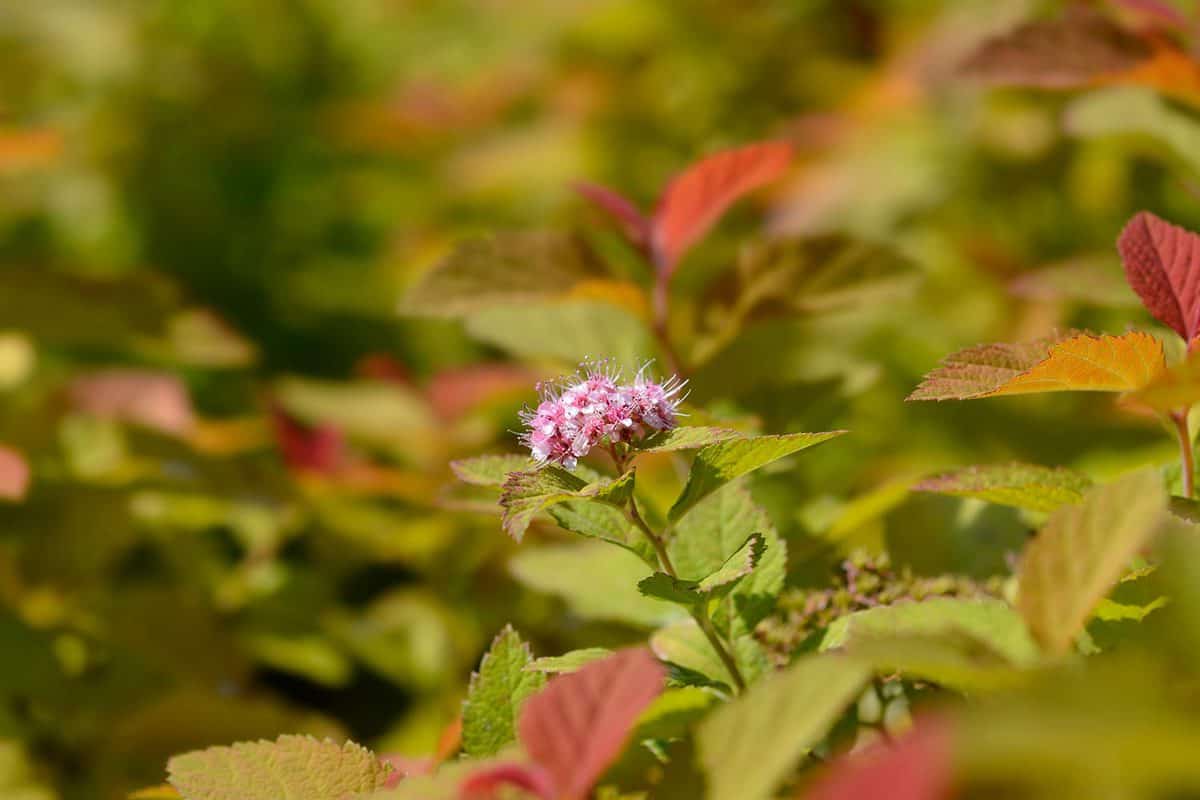
The shrub grows between 2 and 3 feet in both height and width. For optimal growth, plant your shrub in full sun and average, well-draining soils. It can tolerate some light shade if necessary. The best zones for growth are USDA plant hardiness zones 3 through 8.
Its botanical name is Spiraea.
Double Play Big Bang Spirea Live Plant
This shipment comes with a 4-inch pot. If you order it in the winter, the plant will be shipped in a dormant state.
2. Japanese Barberry

This deciduous shrub boasts its showy purplish-red foliage that provides year-round interest to the landscape. It grows at a moderate rate, reaching up to 4 feet in both height and width. It has a dense branching habit of growth. Small, yellow flowers bloom in the spring. Beware of the thorns on it though!
Grow this shrub in USDA hardiness zones 4 through 8. It requires full sun and average, well-draining soil. Water it deeply and frequently during the first growing season, then gradually let off on frequency.
Its botanical name is Berberis thunbergii.
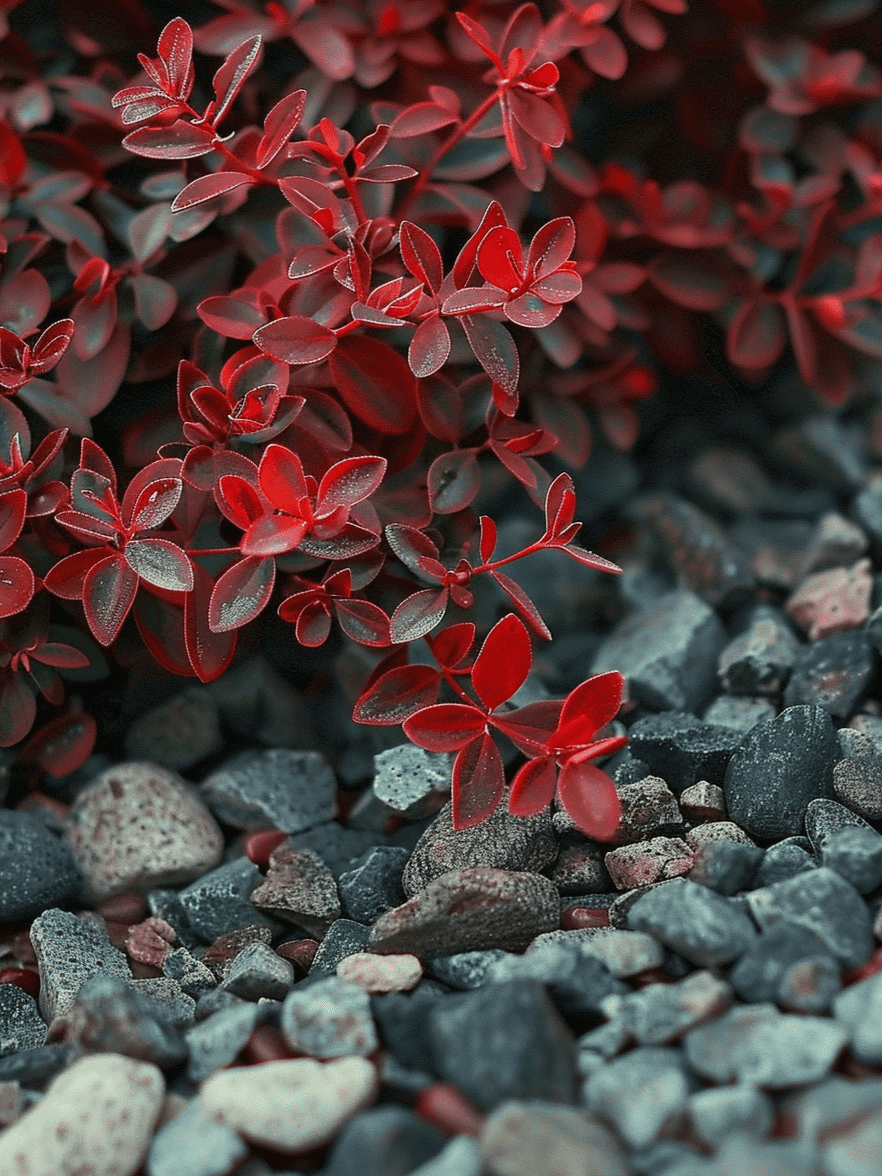
Check out the beautiful hues of this shrub as the leaves transition from brilliant red to vivacious green. Use this shrub as a border plant or stand-alone.
3. Smokebush
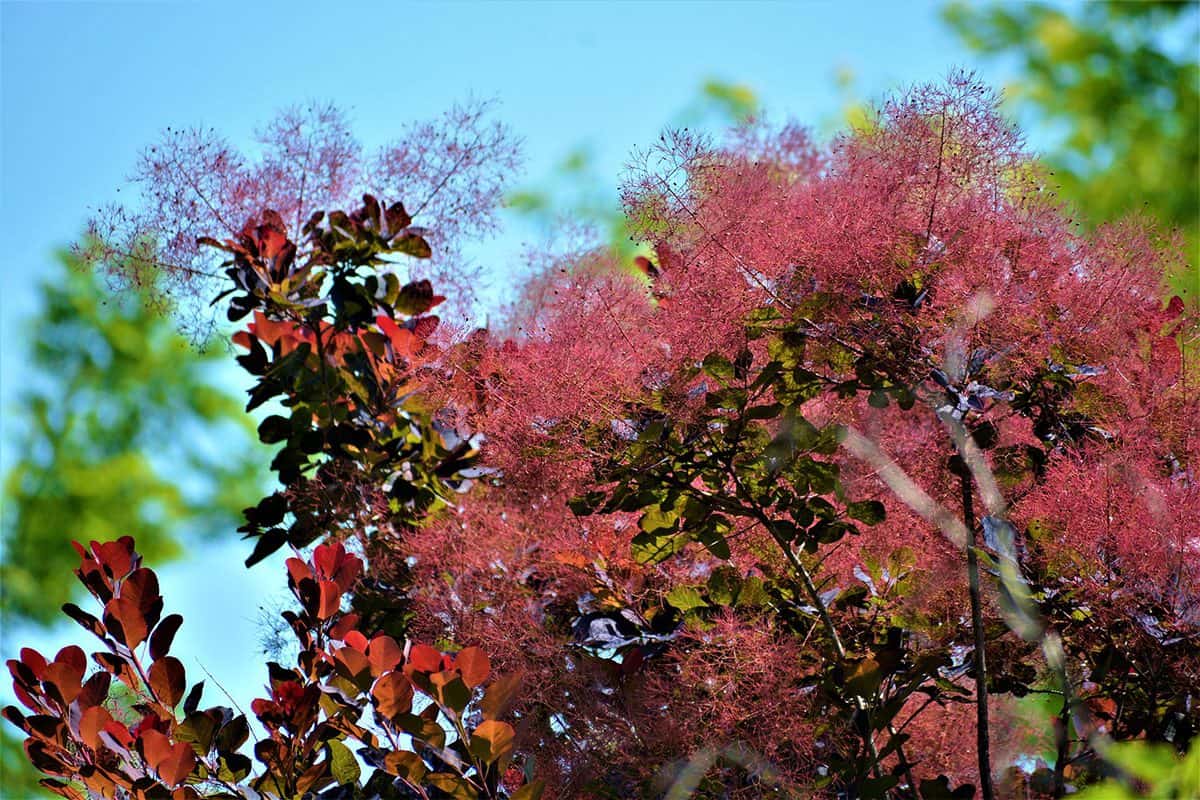
Smokebush is a deciduous shrub that shows off its gorgeous purplish-red plumes and hazy purple leaves. It grows between 10 to 15 feet in both height and width, making it quite the show-stopper.
Depending on the cultivar you pick, the shrub will have either purple or green ovate leaves.
It grows in USDA hardiness zones 4 through 9, giving it a wide range of viable growth locations. It requires full sun exposure but is very drought-tolerant. It can tolerate all soil types as long as it's well-draining.
Its botanical name is Cotinus coggygria.
The Smokebush is an unforgettable plant with large, rust-colored leaves and fluffy plumes. Those two things add a lot of texture and color to the landscape.
4. Diablo Ninebark
The Diablo Ninebark has elongated dark reddish-purple leaves and nice texturized bark. The leaf color provides a pop of color in the landscape. Interestingly, its bark peels back in layers to expose its reddish-brown layers underneath.
At maturity, the shrub grows between 8 and 10 feet in both height and width. Small white blooms appear in the springtime.
Grow this shrub in USDA plant hardiness zones 3 through 7 for best results. Plant it in well-draining soil and make sure it receives a moderate amount of water. The best type of soil should be average or slightly acidic.
Its botanical name is Physocarpus opulifolius. This type of shrub is actually related to the Spiraea species of shrubs.
Live Diablo Ninebark
This Diablo Ninebark comes in a 3-inch pot and measures between 6 and 12 inches upon arrival.
5. Red Tip Photinia
The leaves are a deep red and morph into vibrant greens as they mature. This means your shrub will always have flecks of red as new leaves unfurl.
To guarantee the shrub continuously produces red leaves, trim the ends of the shoots frequently to force new growth.
At maturity, the shrub grows between 12 to 18 feet in height and 8 to 12 feet in width. This shrub is evergreen and the perfect choice for creating hedges and privacy screens. Cream and white flowers blossom during the springtime months.
It grows best in USDA plant hardiness zones 6 through 9. Plant the shrub in a location that receives partial to full sun. The soil must be well-draining. When you water this plant, water at the base and avoid wetting the leaves.
Its botanical name is Photinia x fraseri.
6. Red Majestic
This shrub can grow up to 7 feet in both height and width. It has a unique habit of growth because its branches grow in an intriguing twisting, contorted way.
There are no typical rounded features here. The large leaves are deep burgundy and have a crinkly appearance.
Plant this shrub in an area that receives partial to full sun for optimal growth. As long as the soil is well-draining, your plant will do well. Slightly alkaline soil is the best for its growth, but it can withstand other soil types.
Red Majestic performs best in USDA plant hardiness zones 3 through 9.
Its botanical name is Corylus avellana.
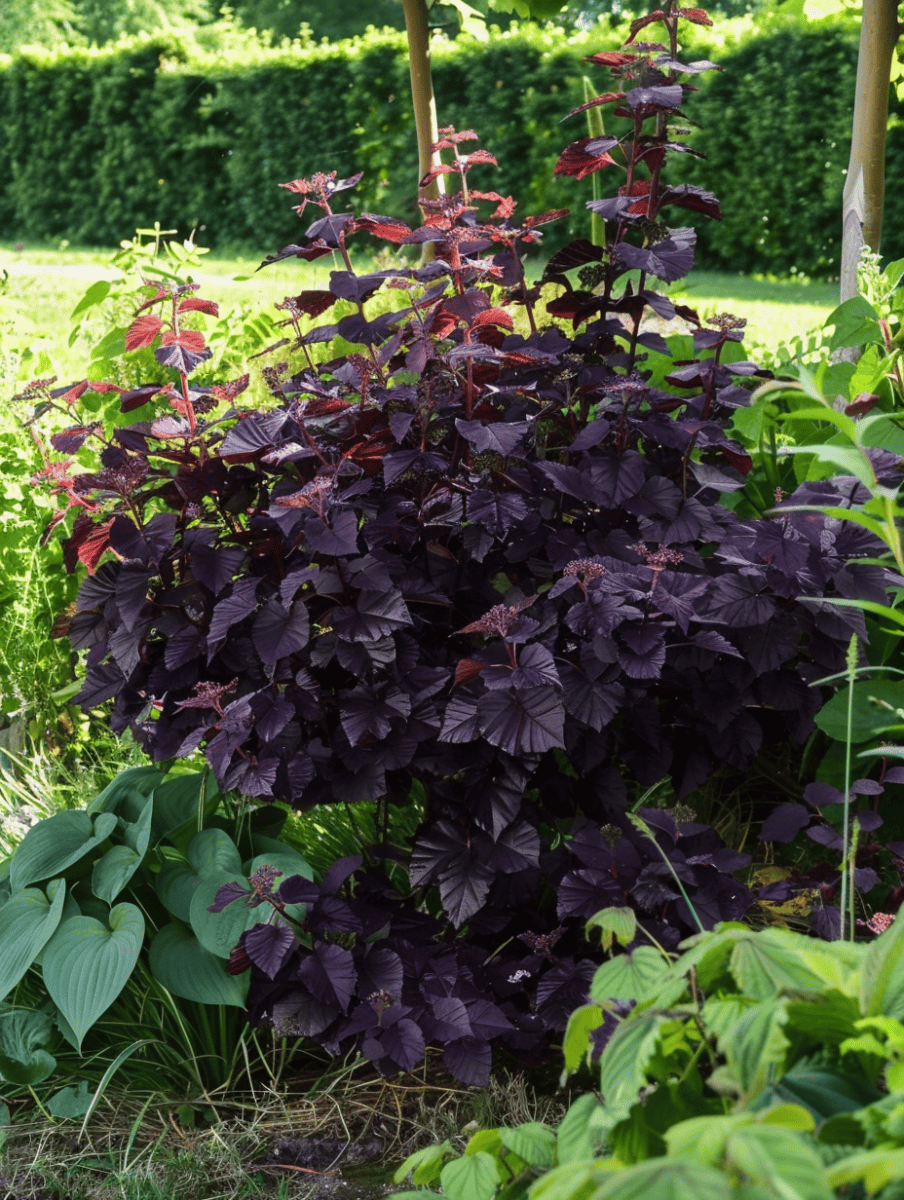
Don't miss out on a gorgeous shrub like this. The dark purplish-red leaves add interesting character.
7. Burgundy Loropetalum
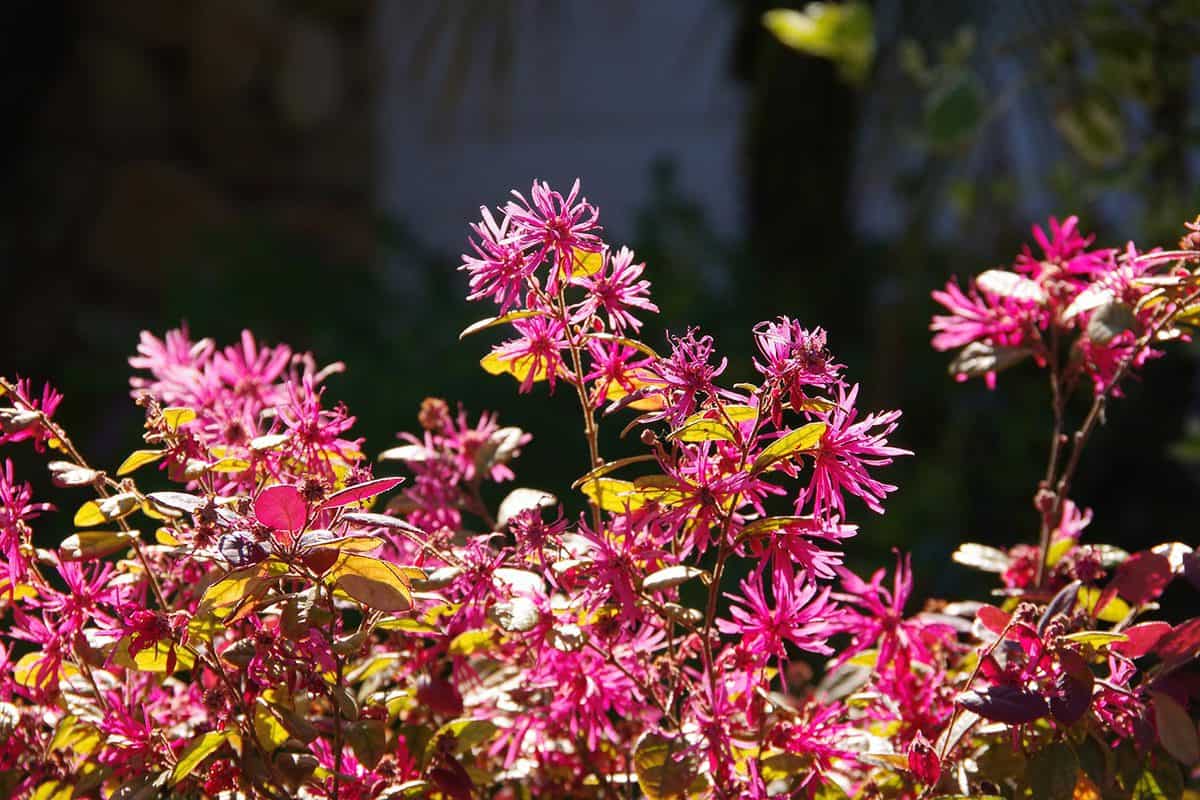
Bold, reddish-purple leaves don these shrubs year-round. Bright pink fringe-like flowers bloom in the spring months, attributing to its common name the Chinese Fringe Flower. The shrub grows between 4 and 5 feet in height and out to 4 feet in width.
Plant these shrubs in full to partial sun. This variety performs better than others when in partial shade. Regularly water these shrubs, but make sure not to overwater them. Fertilize with a granular fertilizer 3 times per year to promote overall health.
Its botanical name is Loropetalum chinensis.
Admire the beauty of this plant as the leaf color transitions. There are many different ways that you can prune this plant to shape it how you'd like.
8. Purple Leaf Sand Cherry

Also known as Plum Leaf Sand Cherry, this plant is a member of the rose family. It's a medium-sized ornamental shrub (or small tree).
At maturity, this plant can grow to be up to 8 feet in both height and width. Its foliage can be seen as purplish, red, and maroon.
During the spring months, a plethora of beautiful whitish-pink blooms appear.
Ideal growing zones are USDA plant hardiness zones 2 through 8. Full to partial sun is optimal for their growth as well as moist, well-draining soil. Prune the shrub to keep it from becoming too heavy.
Its botanical name is Prunus x cistena.
Its whitish-pink blooms paired with the burgundy foliage make it a show-stopper of a plant.
Before you go, be sure to check out these guides -
15 Low Maintenance Evergreen Shrubs For Your Garden
11 Fast-Growing Evergreen Shrubs That Look Great All Year Long
Want to remember this for the future? Click the image below to pin it to one of your Pinterest boards.
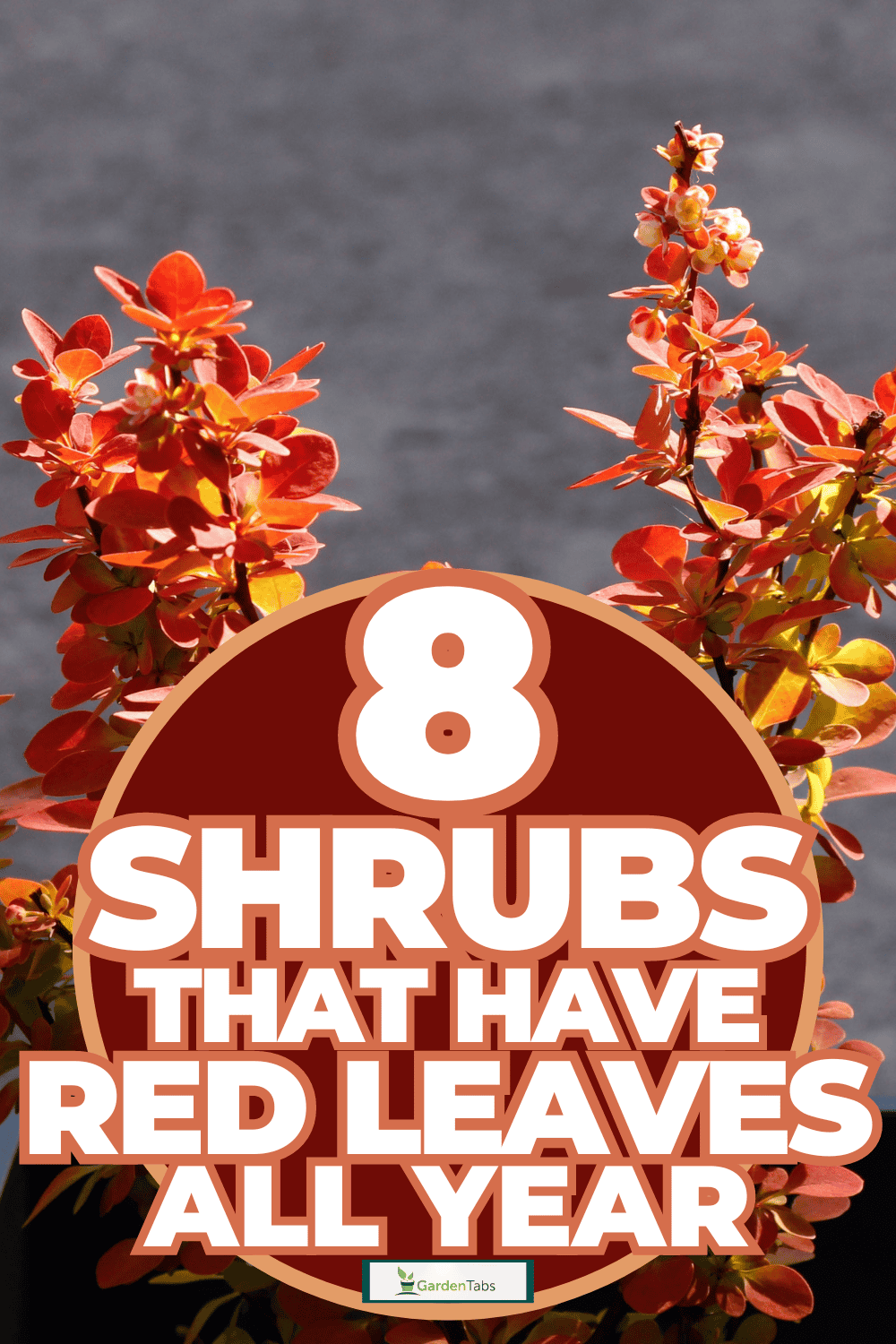
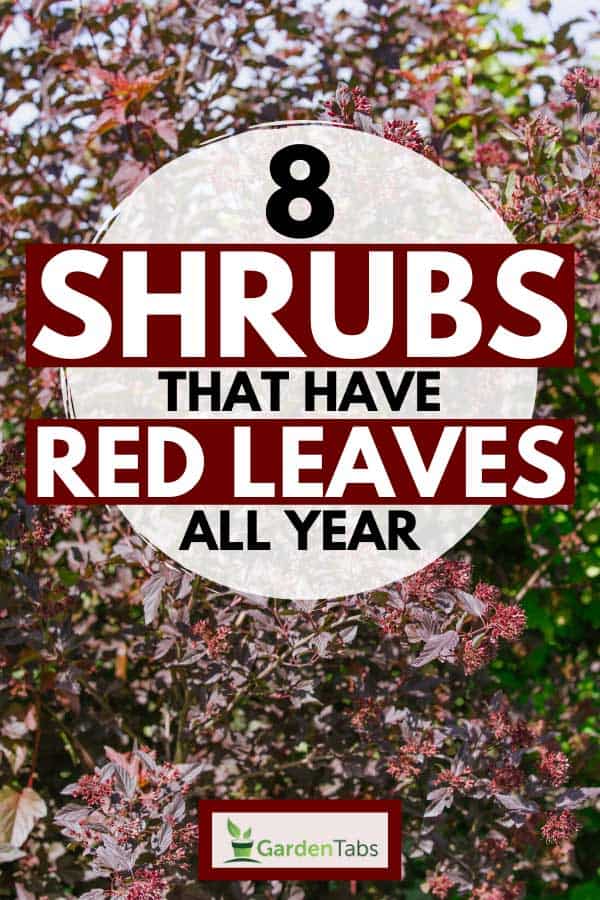



So most of these are not evergreen, that is don’t have red leaves all year round like you’re title suggests!?